
Arne Tiselius’s 1948 Nobel Prize medal in Chemistry. © Alexander Bitar History
Alfred Nobel – The Establishment of the Nobel Prize
Born in Stockholm in the year 1833 as the son of the engineer Immanuel Nobel, the young Alfred soon walked in his father’s footsteps as he, too, wanted to explore and develop new things and inventions. Alfred was one of eight siblings, and notably, only four of them lived to experience adulthood.
During his lifetime, Nobel had over 350 patents, but there’s one patent that he is arguably most famous for – the 1866 invention of dynamite, which he patented a year later. He built plenty of factories worldwide to manufacture dynamite, creating an effective network to produce and market dynamite. Being the great businessman he was, his fortune grew year by year, and during his later years he could title himself one of the world’s wealthiest men.

One of few known photographs of Alfred Nobel, ca. 1883. Public Domain
Nobel was keen to leave a great legacy after his death, and in 1895, Nobel signed his last will, in which he allocated 94% of his fortune to establish five Nobel Prizes. Alfred Nobel passed away in 1896, and it wasn’t until the summer of 1900 that his legacy started to form. The Nobel Foundation was founded with the purpose of managing Nobel’s assets to finance and administrate the Nobel Prizes. And the rest is history… The Nobel Prize has been established as the world’s most prestigious award, and Alfred Nobel succeeded in creating a great legacy as he’s arguably one of the most influential and important human beings from the last two centuries.
The Medals – The Categories, Designs, and Manufacturer
- The Standard Nobel Prize Medals
The designer of the Nobel Prize medals is none other than the Swedish sculptor and engraver Erik Lindberg. In the late 19th century and early 20th century, Lindberg was the finest medal maker and engraver in Sweden. Therefore, it wasn’t a big surprise that he got the mission of designing the Nobel medals. The six medals that were awarded to the 1901 laureates were struck in September 1902. Notably, the Peace Prize was jointly-awarded, hence the total amount of six medals over five categories.
The front side of the standard Nobel Prize medals shows a head-and-shoulder profile image of Alfred Nobel wearing a shirt, jacket, overcoat and a bowtie. Although not fully confirmed, it’s believed that Lindberg had the famous Alfred Nobel image by photographer Gösta Florman as inspiration for the design. Notably, less than ten images are known to exist of Alfred Nobel, so Lindberg didn’t have much to work with, especially since Nobel passed away five years before the medal was designed.

Left: The front side of a standard Nobel Prize medal. © Christie’s | Right: The Alfred Nobel portrait by Gösta Florman, believed to be the inspiration for the Nobel Prize medal design. Public Domain.
On the left side of the portrait, the words “ALFR• NOBEL” are embossed; while on the right side of the portrait, the following is embossed “NAT• MDCCCXXXIII OB• MDCCCXCVI”. “NAT” is an abbreviation for “natalis”, Latin for “born”, and “OB” is abbreviation for “obitus”, Latin for “died”. The Roman numerals are the equivalent of 1883 and 1896, Alfred Nobel’s birth year and the year of his death.
There’s also a small detail on the lower left side, namely “E. LINDBERG 1902”, which refers to that the medal was designed by Eric Lidberg in 1902.
Looking at all four original “Swedish” medals, meaning the categories: Physics, Chemistry, Physiology or Medicine, and Literature, all four medals are identical on the front side, but they do differ on the back side.
- The Nobel Prize in Physics and in Chemistry Medals
Both the Physics and the Chemistry medals are awarded by The Royal Swedish Academy of Science, hence the medals in the two categories are completely identical. The medals represent nature by featuring a goddess, which symbolizes Isis high in the sky on clouds with her arms in a cornucopia. The goddess’ face is partly covered by a veil, but it’s also held up by a woman – Genius of Science – who symbolizes the strength of Science.
In the center, on the bottom of the medal, the name of the laureate is engraved on the plate with the initials of the first name (and in some cases also middle name initials), and the full last name. Under the name of the laureate, the year when the Prize was awarded is engraved in Roman numerals. An example is “A. BOHR / MCMLXXV”, which stands for Aage Bohr, 1975.

Aage Bohr’s 1975 Nobel Prize medal in Physics. © Heritage Auctions
Another engraving that can be found on the left and right side of the embossed goddess is “NATURA” and “SCIENTIA”, Latin for natural science. On the right side, “ERIK LINDBERG” is embossed in small letters.
Around and on top of the figures, the following words are embossed “INVENTAS• VITAM• IUVAT EXCOLUISSE• PER• ARTES”, which literally means “It’s beneficial to have improved human life through discovered arts”. These words were adapted from Aeneid book 6 (line 663) by Vergil (70 BC – 19 BC).
Lastly, on the bottom of the medal, to the left and right sides of the plate, the words “REG• ACAD• SCIENT• SUEC•” are embossed, which stands for The Royal Swedish Academy of Sciences.
- The Nobel Prize in Physiology or Medicine Medal
To clarify, please note that the Physiology or Medicine category is in fact one category, it’s not two separate categories. It’s the acclaimed university Karolinska Institute that awards the winner in the Physiology or Medicine category. The medal symbolizes the Genius of Medicine who’s holding an open book in her lap, collecting the water pouring out from a rock in order to help a sick girl with her thirst.
Like the medals for Physics and Chemistry, this medal also features a nameplate in the center bottom of the medal. An example is “A. FLEMING / MCMXIV”, which stands for Alexander Fleming, 1945. Another similarity is the embossed words
“INVENTAS• VITAM• IUVAT EXCOLUISSE• PER• ARTES” around the figures.

Francis Peyton Rous’s 1966 Nobel Prize medal in Physiology or Medicine. © Heritage Auctions
The bottom of the medal, to the left and right sides of the plate, is embossed with the words “REG• UNIVERSITAS• MED• CHIR• CAROL•”, which stands for the Karolinska Institute.
- The Nobel Prize in Literature Medal
The Literature Prize is awarded by the Swedish Academy (Svenska Akademien) and is the rarest medal since it’s only awarded to one laureate per year (only four exceptions to that rule have accrued, those appeared in 1904, 1917, 1966, and 1974). The medal symbolizes a young man sitting under a tree who carefully listens to, and writes down, the song of his Muse.
In accordance with the medals for Physics, Chemistry, and Physiology or Medicine, this medal features a nameplate in the center bottom of the medal. An example of the engraving is “B. DYLAN / MMXVI”, which stands for Bob Dylan, 2016. Another similarity is the embossed words “INVENTAS• VITAM• IUVAT EXCOLUISSE• PER• ARTES” around the figures.

Doris Lessing’s 2007 Nobel Prize medal in Literature. © Christie’s
The bottom of the medal, to the left and right sides of the plate, is embossed with the words “ACAD• SUEC•”, which stands for the Swedish Academy.
- The Nobel Peace Prize Medal
As clarified above, the Peace Prize was the Norwegian’s responsibility, more precisely, the Norwegian Nobel Committee. Hence, it’s not surprising that Gustav Vigeland (1869–1943), an acclaimed Norwegian sculptor, got the task to design the medal.
The medal features Alfred Nobel in the same pose, yet slightly different from the standard Nobel medal. The main difference in the portrait is that only the face and neck of Alfred Nobel is shown on the Peace medal, while the standard medal is a head-and-shoulder portrait of Alfred Nobel. Otherwise, it’s very similar images as both show Alfred with his hair parted on the side. Both variations show Alfred with a beard and mustache, although it’s much more visible on the standard medal. The inscription, however, is the same on the Peace Prize medals as the standard medals. The words “ALFR• NOBEL• NAT• MDCCCXXXIII• OB• MDCCCXCVI”, are featured on the front side, which are boldly embossed around the bust of Nobel. “MDCCCXXXIII” is Roman numerals for 1833, and “MDCCCXCVI” translates into 1896, which is the birth year and the year of death of Alfred Nobel.

The front and back of Auguste Beernaert’s 1909 Nobel Peace Prize medal. © Christie’s
Another difference is that the Peace medal has “MODEL• G• VIGELAND” embossed, whilst the standard medal has “E. LINDBERG 1902” embossed. These details are small in size and very discrete, but they indicate the designer of the medals.
The reverse side of the Peace Prize is also interesting as it features a group of three men with their arms united in brotherhood. Like the front side, the reverse side is also features a large embossed text surrounding the illustrative image, reading “PRO• PACE• ET• FRATERNITATE• GENTIUM”, which is Latin for “For the peace and brotherhood of men”.
All the text and the images on the front and back side of the Peace medals are embossed. The only detail that’s engraved is the edge, which reads “PRIX• NOBEL• DE• LA• PAIX” (French for “The Nobel Peace Prize”), and then the name of the laureate and the year of the prize, e.g. “JOHN R. MOTT 1946”.

The edge of Alfonso Garcia Robles’ 1982 Nobel Peace Prize medal. © Christie’s
- The Economic Science Prize Medal
In 1968 when the central bank of Sweden, The Swedish Riksbank (Sveriges Riksbank) celebrated 300 years, a new Nobel Prize was introduced – the Sveriges Riksbank Prize in Economic Sciences in Memory of Alfred Nobel. That’s the official name. The unofficial name is simply The Nobel Prize in Economics.
The Economics medal resembles more with the Peace Prize medal than the standard Nobel Prize medals. It’s a more rough surface with more texture. The front side features, as with all medals, a bust portrait of Alfred Nobel. On the lower side of the medal, the Swedish Riksbank crossed horns of plenty are embossed. Around the portrait, the following words are written: “SVERIGES RIKSBANK TILL ALFRED NOBELS MINNE 1968”, which is notable since it’s in Swedish, and it translates into “Sveriges Riksbank, in memory of Alfred Nobel, 1968”. On the right side of the portrait is a very small and discrete engraving of the initials “GSL”, which is the initials of Gunvor Svensson-Lundqvist (1916-2009) who designed the Economics medal in 1968.

The front and back sides of Friedrich Hayek’s 1974 Nobel Prize medal in Economics. © Sotheby’s
The back side of the medal features a North Star emblem connected to the Royal Swedish Academy of Sciences, with the words “KUNGLIGA VETENSKAPSAKADEMIN” (The Royal Swedish Academy of Sciences) around the edge.
Notably, the name of the laureate, and the year of the prize, is discreetly engraved on the edge of the medal; just like with the Peace Prize medals.
- The dimensions and weight of the Medals
All Nobel medals in all categories have a diameter of 66 mm (2.265 inches). From 1902 when the first medals were struck, until the year 1979, all medals was made out of 23-carat solid gold. The weight for all the “Swedish” medals were approximately 200 grams, while the Peace medal’s weight was approximately 192 grams.
From 1980 and onward, the medals were made of 18-carat green gold (also known as electrum or recycled gold, meaning a mix of gold and silver with small traces of copper), and plated with 24-carat gold. The weight of the standard “Swedish” medals went down to approximately 175 grams, but the Peace Prize medal went up to approximately 196 grams, and the Economics medal went down to just 185 grams. Notably, the 66 mm (2.265 inches) dimensions remained the same.
- The Manufacturer of the Medals
Although the first Nobel Prizes were awarded in 1901, it wasn’t until the year after when the first medals were struck. From 1902 to 2010, all medals were struck in Eskilstuna, a town close to Stockholm, by the manufacturer Myntverket (The Royal Mint). That also included the Economic Prize medal, which was introduced and first struck in 1969.

The front and back sides of Murray Gell-Mann’s 1969 Nobel Prize medal in Physics. © Sotheby’s
However, in 2011, Myntverket was shut down, and all the medals were produced in Norway, more precisely in Kongsberg by Det Norske Myntverket (Mint of Norway).
A year later, in 2012, The Nobel Foundation in Stockholm decided that the production of the standard Nobel Prize medals and the Economic Science Prize medals should be produced by Svenska Medalj (Swedish Medal) in Eskilstuna. The Norwegian Nobel Institute, on the other hand, wanted the production of the Peace Prize medals to stay in Norway (Det Norske Myntverket).
Although a lot happened between 2010 to 2012 regarding where the medals should be struck, the designs and proportions stayed the same.
All medals are presented in an exclusive medal case in high-quality soft goat leather. The boxes were, for decades, handcrafted by bookbinder Anders Eriksson, but in 2020, the Swedish royal court supplier Leonard Gustafsson’s bookbinding got the mission to craft the medal cases for the standard medals as well as for the Economic medals. The boxes for the Peace Prize medals are crafted in Norway as of 2020. In short, it’s fair to say that there’s been a much more clear division between the production of the medal and medal case for the Peace Prize compared to the other categories. The Peace Prize is Norwegian, and nowadays, everything related to the Peace Prize is manufactured in Norway, whilst everything related to the Swedish categories, are manufactured in Sweden. Just one and a half decades ago (and back to 1902), everything was made in Sweden.
The Most Expensive Nobel Prize Medals

Dmitry Muratov’s 2021 Nobel Peace Prize medal. © Heritage Auctions
Just over a thousand people have been honored with receiving the world’s most prestigious and important award – The Nobel Prize. Out of these thousand Nobel medals, only a few have ever left the original owner or their families. In contrast to Academy Awards, it’s fully legal to sell a Nobel Prize medal.
The value of a Nobel Prize medal is attributed to the laureate and his or her legacy. The better the name, the higher the value. Albert Einstein’s 1921 physics medal would arguably become the most expensive Nobel Prize medal if it would be offered for sale. That’s highly unlikely since it’s now property of a museum in Jerusalem. Other massive names that would bring high-end prices are Martin Luther King, Nelson Mandela, and Marie Curie.
To date, only a handful of Nobel Prize medals have been publicly sold. Below are the 32 most expensive Nobel Prize medals ever sold at auction.
#1 … $103,500,000 USD
Laureate: Dmitry Muratov
Category and Year: Peace, 2021
Auction House: Heritage Auctions
#2 … $4,757,000 USD
Laureate: James Watson
Category and year: Physiology or Medicine, 1962
Auction House: Christie’s
#3 … $2,270,500 USD
Laureate: Francis Crick
Category and year: Physiology or Medicine, 1962
Auction House: Heritage Auctions
#4 … £1,155,000 GBP
Laureate: Friedrich Hayek
Category and year: Economics, 1974
Auction House: Sotheby’s

Left: James Watson’s 1962 Nobel Prize medal in Physiology or Medicine. © Christie’s | Right: Francis Crick’s 1962 Nobel Prize medal in Physiology or Medicine. © Heritage Auctions
#5 … $975,000 USD
Laureate: Richard Feynman
Category and year: Physics, 1965
Auction House: Sotheby’s
#6 … $975,000 USD
Laureate: John Forbes Nash Jr.
Category and year: Economics, 1994
Auction House: Christie’s
#7 … $795,000 USD
Laureate: Alan Hodgkin
Category and year: Physiology or Medicine, 1963
Auction House: Nate D. Sanders Auctions
#8 … $765,000 USD
Laureate: Leon Lederman
Category and year: Physics, 1988
Auction House: Nate D. Sanders Auctions
#9 … $665,000 USD
Laureate: Kary Mullis
Category and year: Chemistry, 1993
Auction House: Bonhams
#10 … $625,000 USD
Laureate: Murray Gell-Mann
Category and year: Physics, 1969
Auction House: Sotheby’s

John Forbes Nash Jr.’s 1994 Nobel Prize medal in Economics. © Christie’s (detail)
#11 … $545,000 USD
Laureate: George Minot
Category and year: Physiology or Medicine, 1954
Auction House: Bonhams
#12 … $487,500 USD
Laureate: Alfonso Garcia Robles
Category and year: Peace, 1982
Auction House: Christie’s
#13 … $461,000 USD
Laureate: Francis Peyton Rous
Category and year: Physiology or Medicine, 1966
Auction House: Heritage Auctions
#14 … $457,000 USD
Laureate: Walter Kohn
Category and year: Chemistry, 1998
Auction House: Nate D. Sanders
#15 … £422,500 GBP
Laureate: Auguste Beernaert
Category and year: Peace, 1909
Auction House: Christie’s
#16 … $399,999 USD
Laureate: Paul Samuelson
Category and year: Economics, 1970
Auction House: Heritage Auctions

Left: Alfonso Garcia Robles’ 1982 Nobel Peace Prize medal. © Christie’s | Right: Paul Samuelson’s 1970 Nobel Prize medal in Economics. © Christie’s
#17 … $395,000 USD
Laureate: Heinrich Wieland
Category and year: Chemistry, 1927
Auction House: Nate D. Sanders Auctions
#18 … $390,000 USD
Laureate: Simon Kuznets
Category and year: Economics, 1971
Auction House: Nate D. Sanders Auctions
#19 … £372,000 GBP
Laureate: Daniel Nathans
Category and year: Physiology or Medicine, 1978
Auction House: Christie’s
#20 … £329,000 GBP
Laureate: James Chadwick
Category and year: Physics, 1935
Auction House: Sotheby’s
#21 … £275,000 GBP
Laureate: Hans Krebs
Category and year: Physiology or Medicine, 1963
Auction House: Sotheby’s
#22 … $275,000 USD
Laureate: Arthur Compton
Category and year: Physics, 1927
Auction House: Sotheby’s

Left: Daniel Nathans’ 1978 Nobel Prize medal in Physiology or Medicine. © Christie’s | Right: Arthur Compton’s 1927 Nobel Prize medal in Physics. © Sotheby’s
#23 … $274,000 USD
Laureate: Georg Wittig
Category and year: Chemistry, 1979
Auction House: Heritage Auctions
#24 … $250,000 USD
Laureate: George A. Olah
Category and year: Chemistry, 1994
Auction House: Nate D. Sanders
#25 … $200,000 USD
Laureate: Frederick C. Robbins
Category and year: Physiology or Medicine, 1954
Auction House: Sotheby’s
#26 … £187,500 GBP
Laureate: Doris Lessing
Category and year: Literature, 2007
Auction House: Christie’s
#27 … $187,000 USD
Laureate: Thomas Schelling
Category and year: Economics, 2015
Auction House: Nate D. Sanders Auctions
#28 … $180,000 USD
Laureate: Arne Tiselius
Category and year: Chemistry, 1948
Auction House: Alexander Bitar History via Goldin

Left: Georg Wittig’s 1979 Nobel Prize medal in Chemistry. © Heritage Auctions | Right: Doris Lessing’s 2007 Nobel Prize medal in Literature. © Christie’s
#29 … £150,000 GBP
Laureate: Archer Martin
Category and year: Chemistry, 1952
Auction House: Noonans Mayfair
#30 … $129,250 USD
Laureate: Walther Bothe
Category and year: Physics, 1954
Auction House: Heritage Auctions
#31 … $128,000 USD
Laureate: Cyril Norman Hinshelwood
Category and year: Chemistry, 1956
Auction House: Julien’s Auctions
#32 … $108,000 USD
Laureate: Aage Bohr
Category and year: Physics, 1975
Auction House: Heritage Auctions

Left: Walther Bothe’s 1954 Nobel Prize medal in Physics. © Heritage Auctions | Right: Aage Bohr’s 1975 Nobel Prize medal in Physics . © Heritage Auctions
If you liked what you read, we encourage you to explore our website: from insightful articles to fascinating stories, there’s plenty to discover. So don’t hesitate, dive in and satisfy your curiosity with Collectors Weekly!
(If you buy something through a link in this article, Collectors Weekly may get a share of the sale. Learn more.)
The article is written by Alexander Bitar, an internationally acclaimed dealer of high-end collectibles, owner of Alexander Bitar History. Based in Stockholm and Beverly Hills, some of Alexander Bitar’s specialties are entertainment and historical memorabilia, vintage luxury watches, autographs, and important manuscripts.
 John Lennon's Oddly Patronizing Letter to Eric Clapton Up For Auction
John Lennon's Oddly Patronizing Letter to Eric Clapton Up For Auction The History Channel's 'Pawn Stars'
The History Channel's 'Pawn Stars' T206 Honus Wagner: The World’s Greatest Sports Card
T206 Honus Wagner: The World’s Greatest Sports Card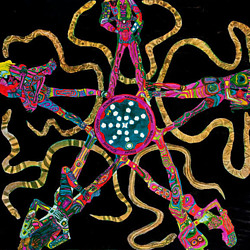 Mari Tepper: Laying it on the Line
Mari Tepper: Laying it on the Line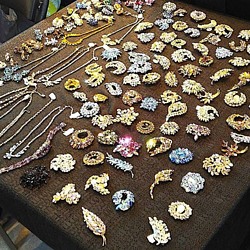 Nice Ice: Valerie Hammond on the Genteel Charm of Vintage Canadian Costume Jewelry
Nice Ice: Valerie Hammond on the Genteel Charm of Vintage Canadian Costume Jewelry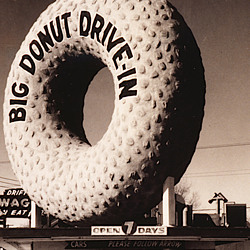 How Jim Heimann Got Crazy for California Architecture
How Jim Heimann Got Crazy for California Architecture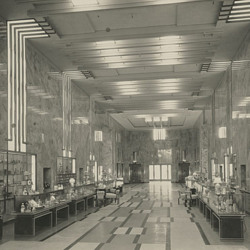 Modernist Man: Jock Peters May Be the Most Influential Architect You've Never Heard Of
Modernist Man: Jock Peters May Be the Most Influential Architect You've Never Heard Of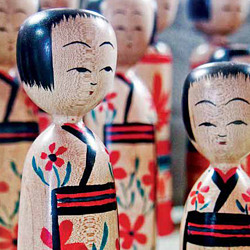 Meet Cute: Were Kokeshi Dolls the Models for Hello Kitty, Pokemon, and Be@rbrick?
Meet Cute: Were Kokeshi Dolls the Models for Hello Kitty, Pokemon, and Be@rbrick?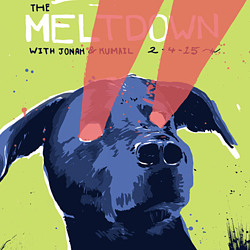 When the King of Comedy Posters Set His Surreal Sights on the World of Rock 'n' Roll
When the King of Comedy Posters Set His Surreal Sights on the World of Rock 'n' Roll How One Artist Makes New Art From Old Coloring Books and Found Photos
How One Artist Makes New Art From Old Coloring Books and Found Photos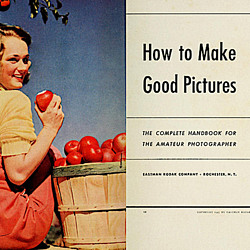 Say Cheese! How Bad Photography Has Changed Our Definition of Good Pictures
Say Cheese! How Bad Photography Has Changed Our Definition of Good Pictures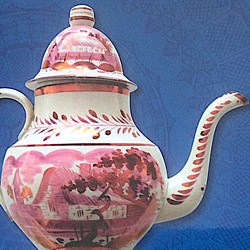 Middle Earthenware: One Family's Quest to Reclaim Its Place in British Pottery History
Middle Earthenware: One Family's Quest to Reclaim Its Place in British Pottery History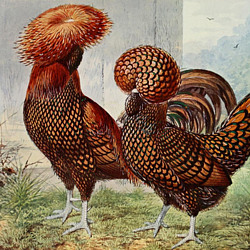 Fancy Fowl: How an Evil Sea Captain and a Beloved Queen Made the World Crave KFC
Fancy Fowl: How an Evil Sea Captain and a Beloved Queen Made the World Crave KFC
Very interesting article. Thanks